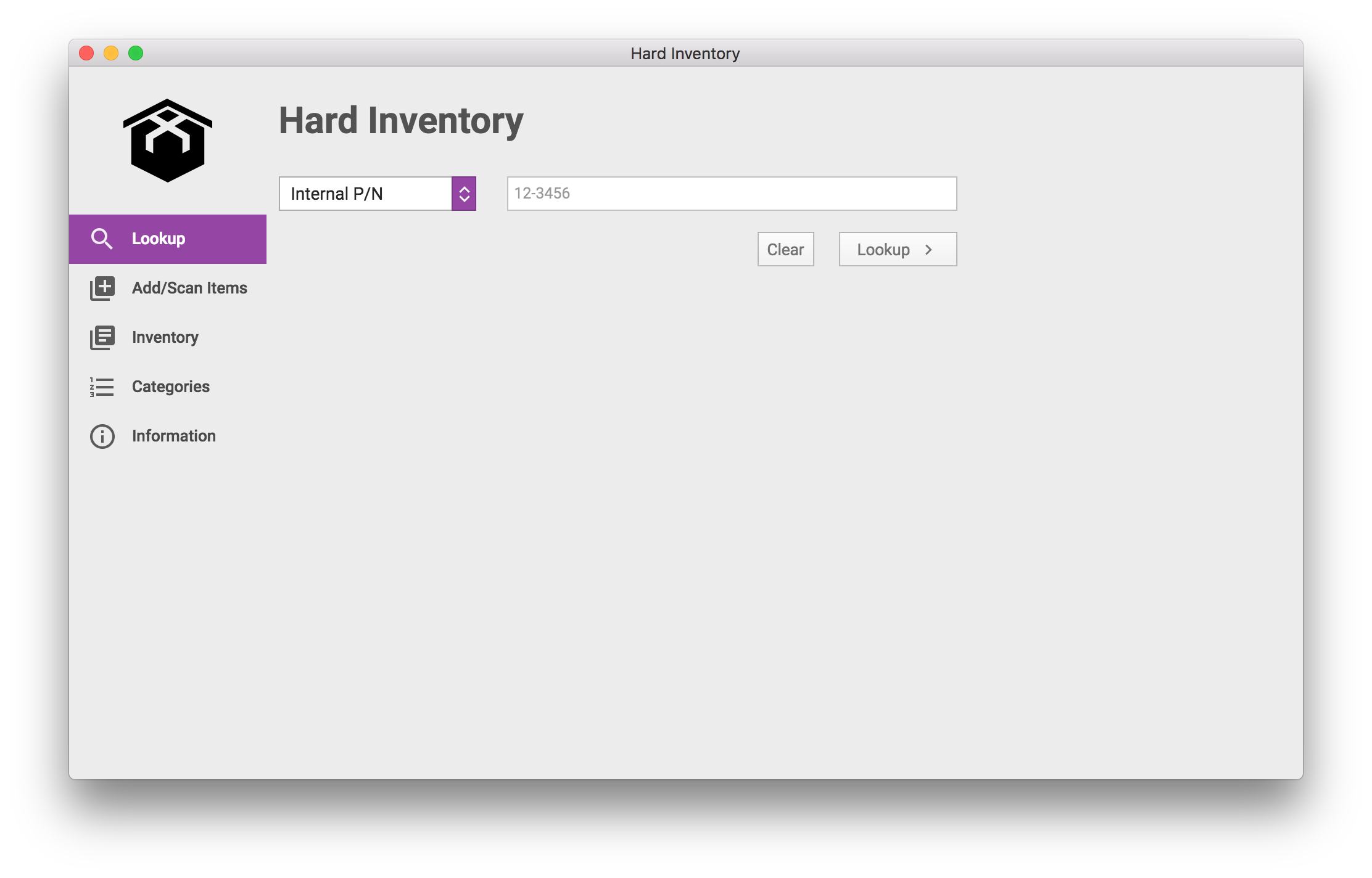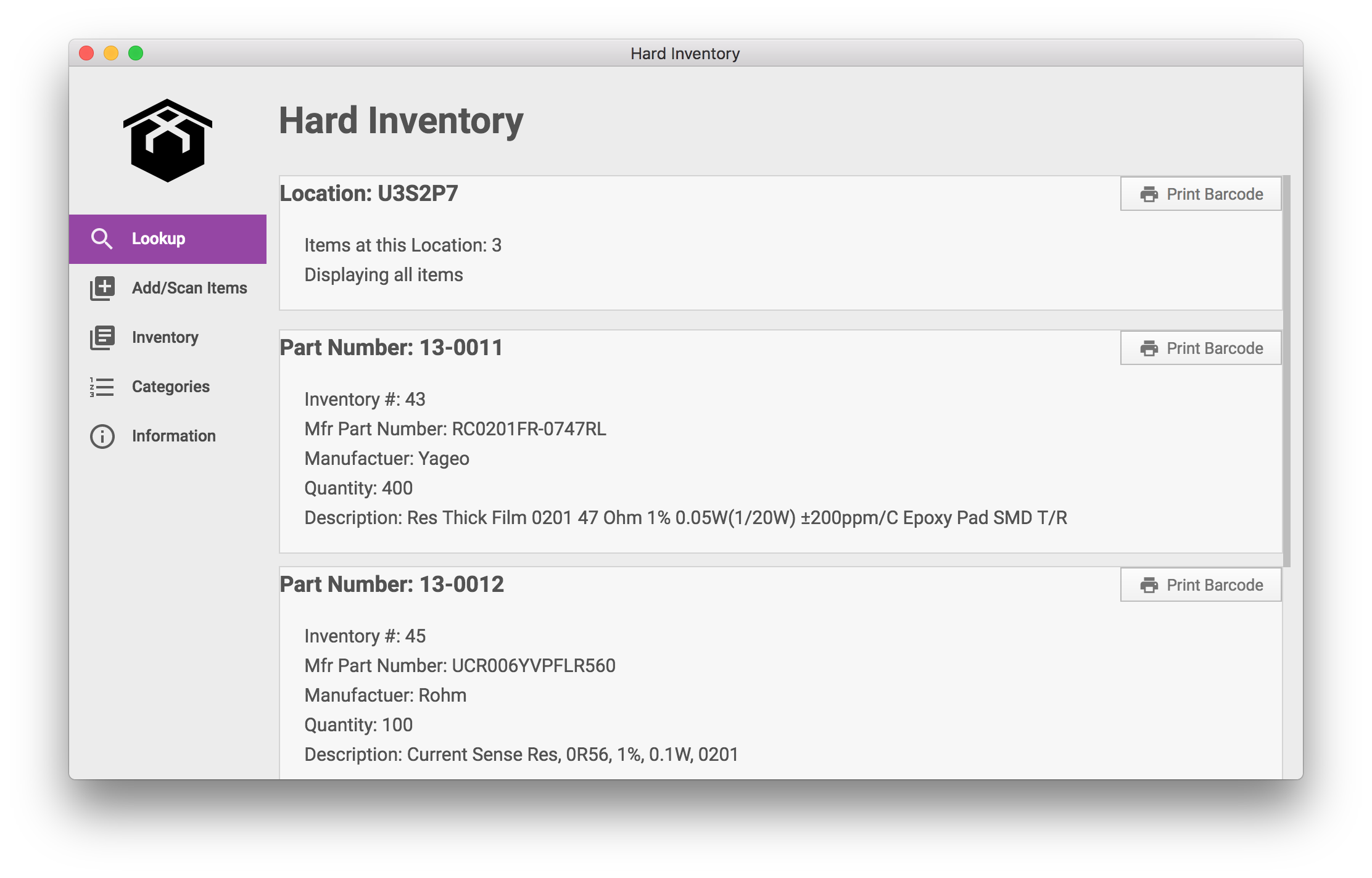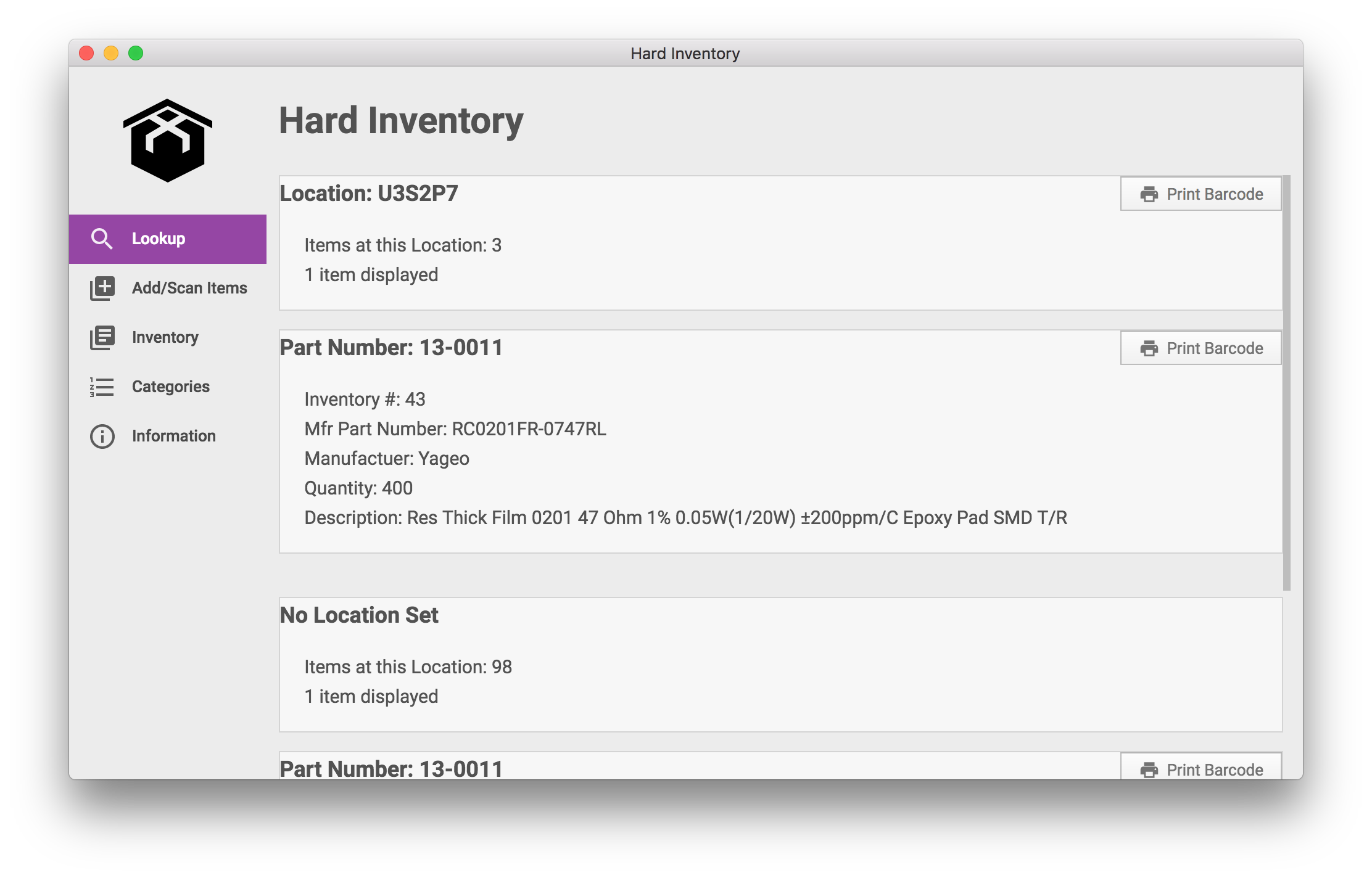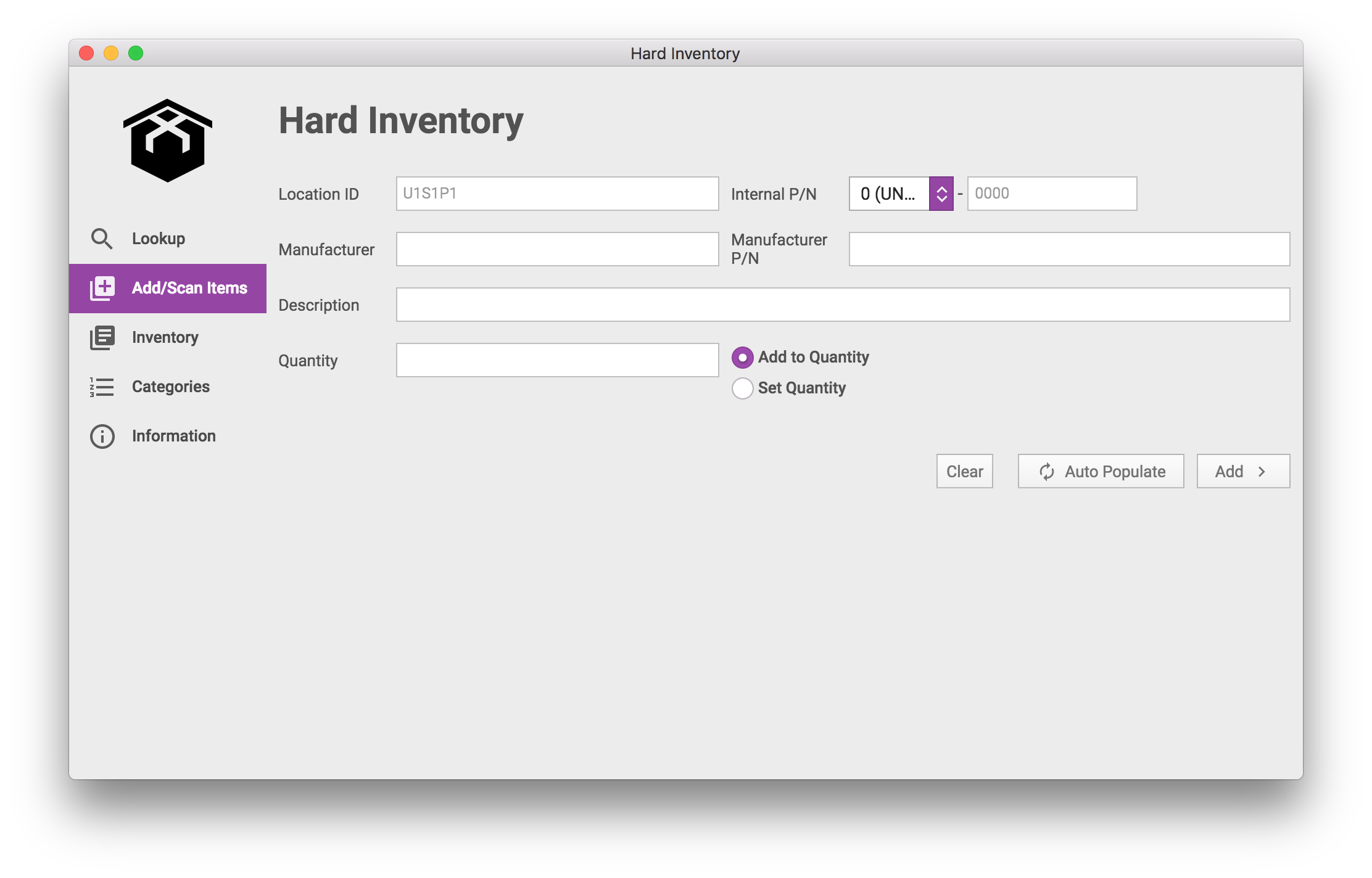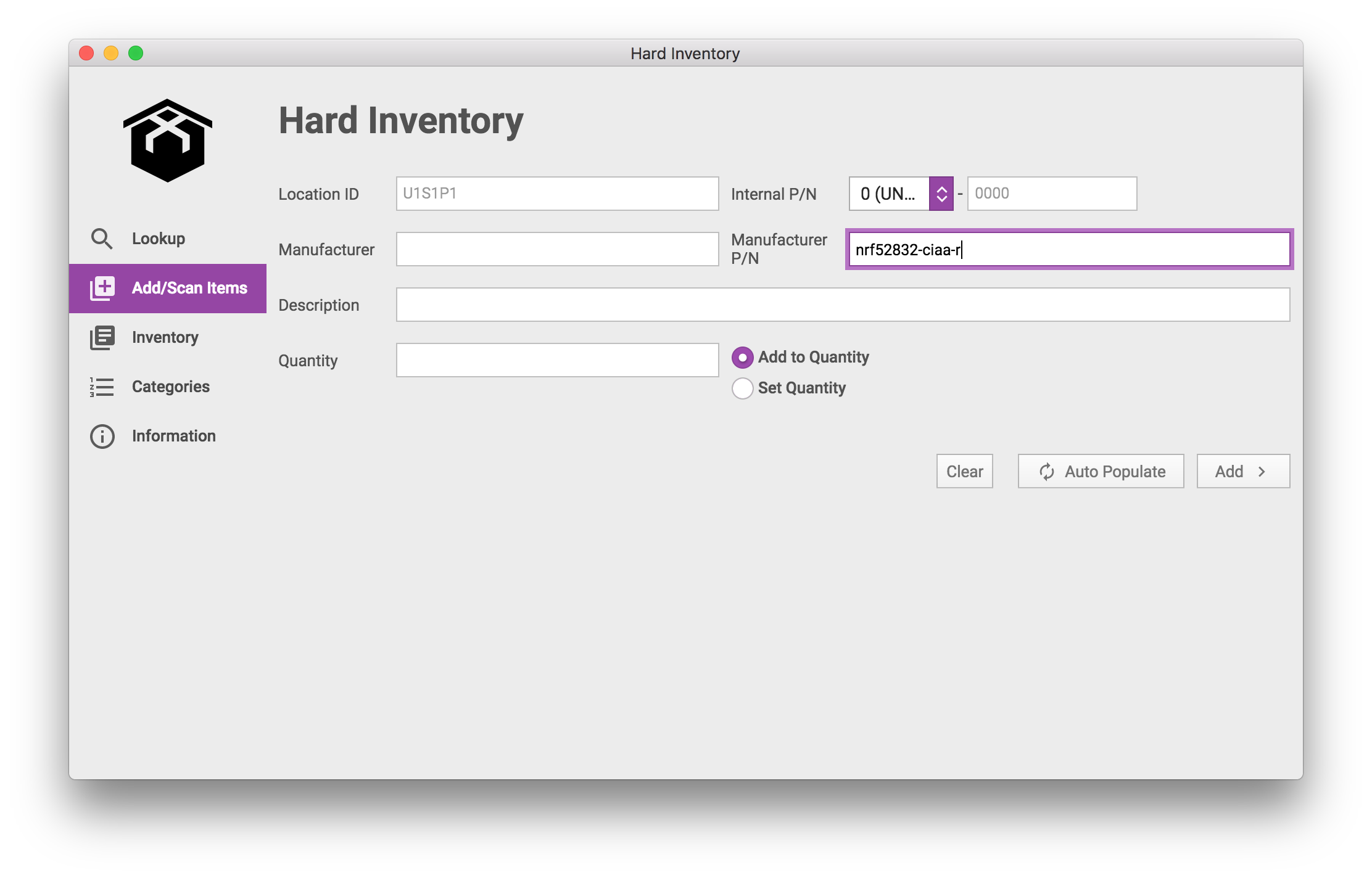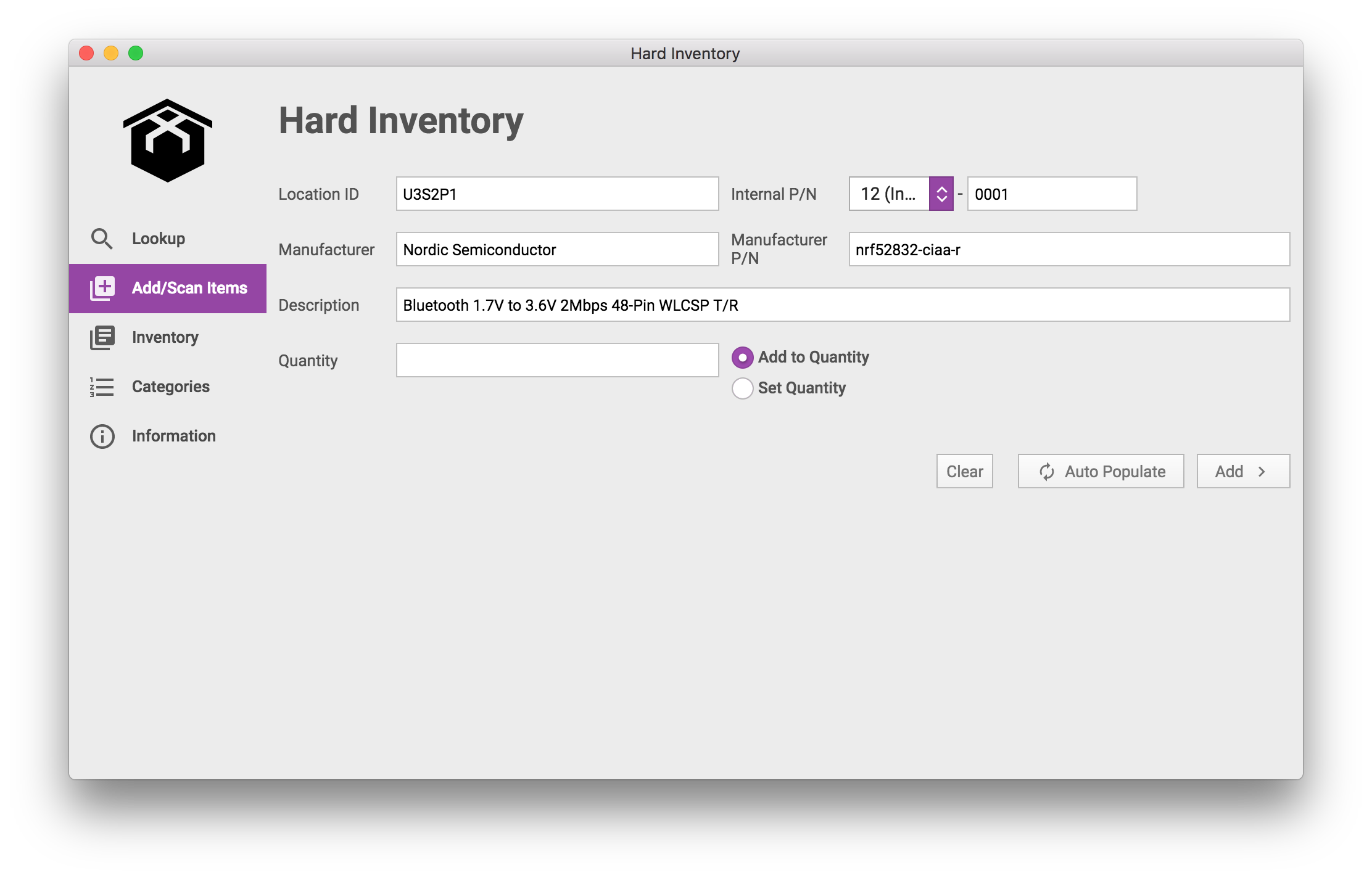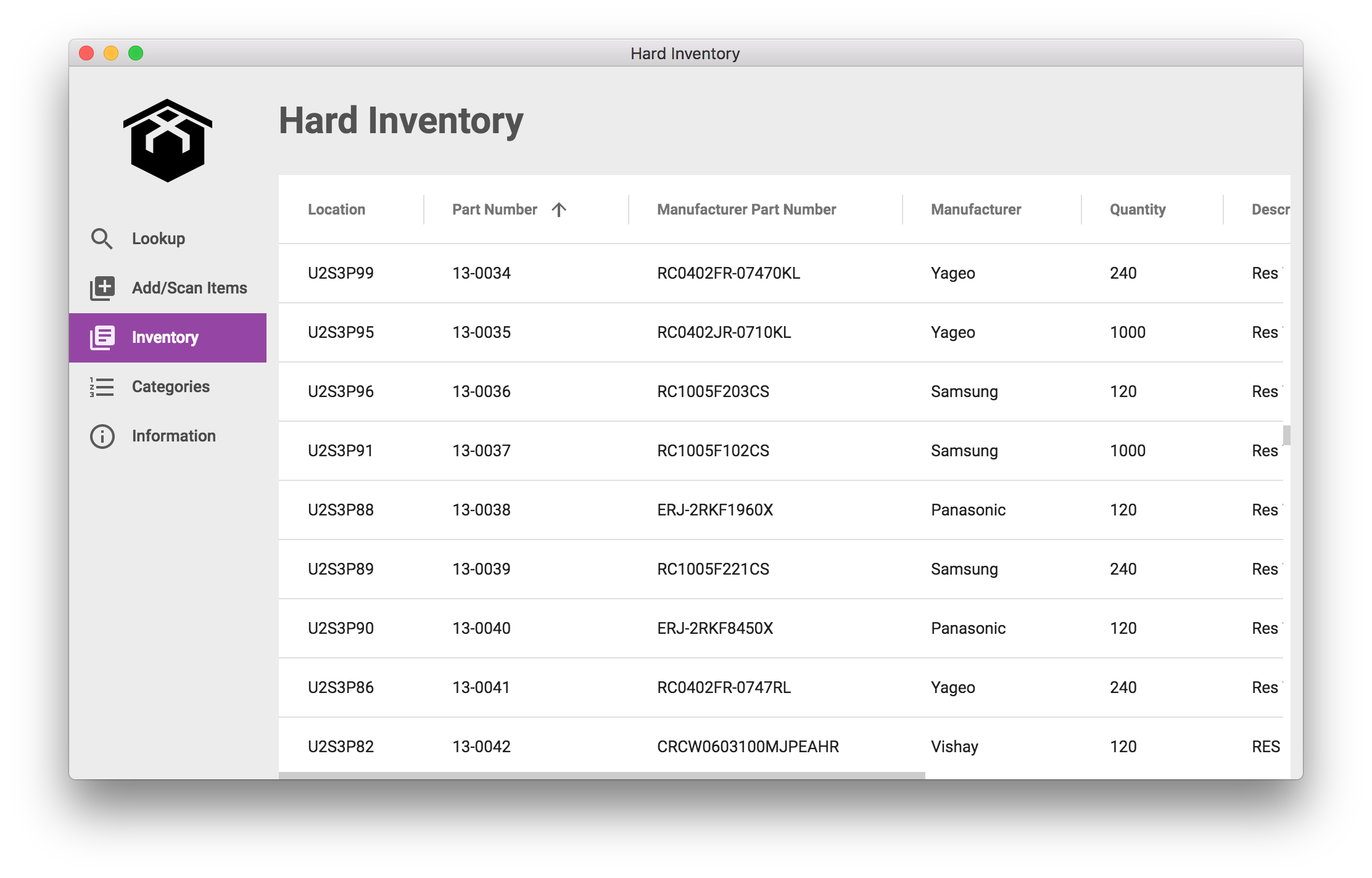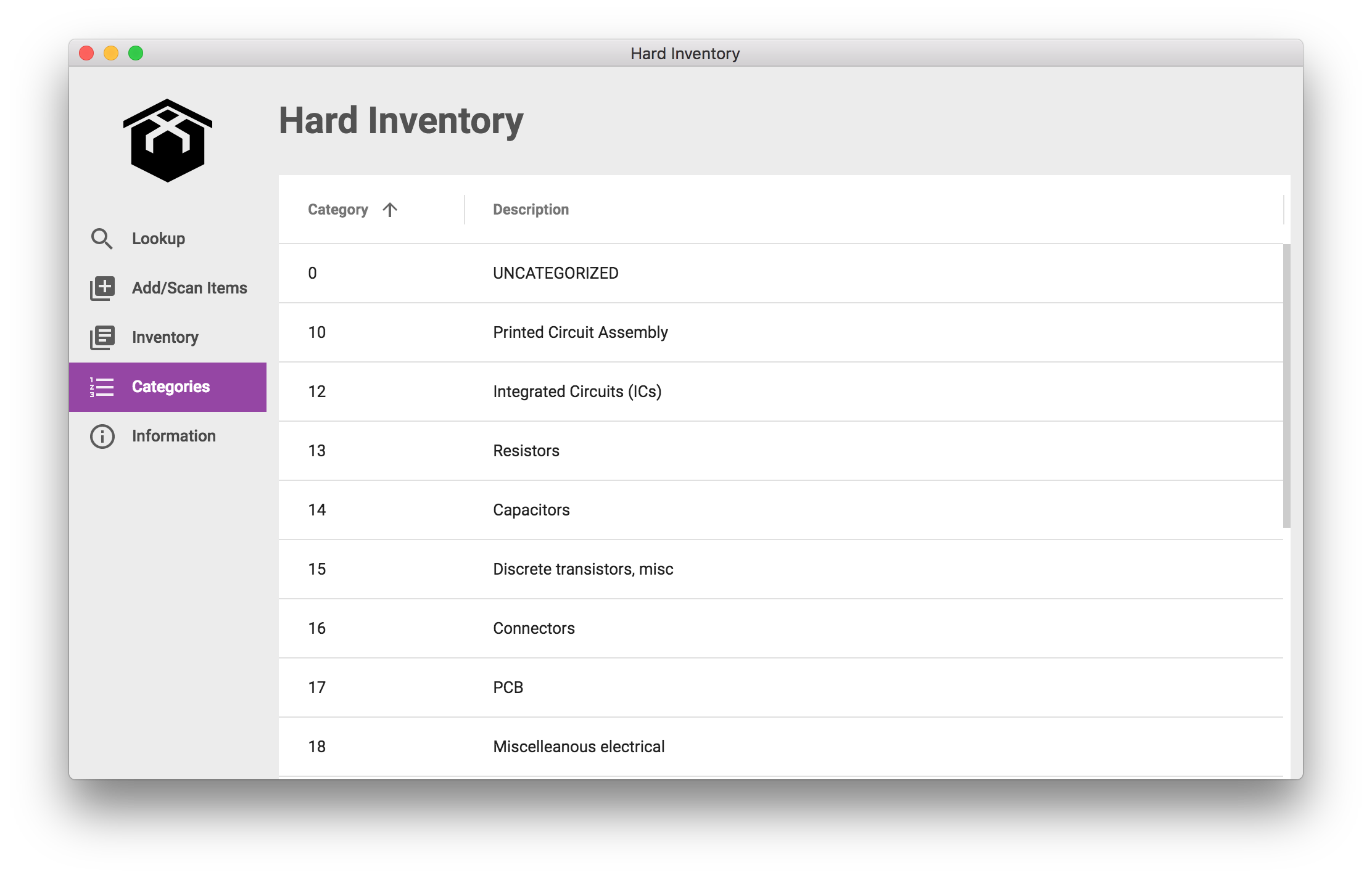- Cross-platform desktop app (Windows, macOS, Linux) using the Electron framework.
- Use a barcode scanner to quickly and accurately scan 1D and 2D barcodes from Digi-Key, Mouser, Arrow, etc into a Google Sheets document.
- Manual entry for any type of inventory, not just electronic components (track shots back from the injection molder, boxes for shipping, pens...).
- Electronic component information is automatically populated from Octopart, including the component type for auto-generating (internal) part numbers with.
- Print out barcodes (QR codes) and human-readable text labels for organization.
The design intent is to be a low-overhead system that gets all your inventory entered fast and accurately, so later if and when you need to move to a more complex and capable system, it's easy to make the transition. To this end, the application is backed by Google Sheets, not a database - this way you can easily manually edit data, copy/paste to Excel, etc, etc. This design certainly has its limitations, but also some pretty huge advantages.
Make sure you have Node.js installed, then type the following commands...
git clone https://github.com/ProxxiTech/HardInventory.git
<set configuration options here; see Configuration below>
cd HardInventory
npm install
npm start...and if everything went well, you will have Hard Inventory on your screen.
To build a distribution (installer) package for the current operating system only...
npm run releaseTo build distribution (installer) packages for all platforms (macOS/Windows/Linux)...
npm run release-allOnly macOS can build macOS (as well as Windows and Linux) builds, while the other platforms can build eachother but not macOS. This is unfortunately due to macOS codesigning only working on macOS systems.
I use the Teemi TMSL-55 Bluetooth 2D barcode scanner. It's readily available from Amazon, very cheap, and works quite well (a bit slower than some other scanners, but not too bad). You'll want a 2D barcode scanner as most distributrors now use ECIA 2D Data Matrix barcodes to encode lots of details about parts (not just the part number, but order information, quantities, etc).
There are lots of options for most barcode scanners for the type of keyboard they emulate and adding prefixes and suffixes to the data they read in, so you'll want to check with your scanners manual to set it up correctly. For keyboard layout, I use US Keyboard, but I don't think that'll matter (but maybe it does - please let me know if you have issues with other emulated layouts, but really you should just use US as there's no reason not to).
I use the Brother QL-800 label printer with 29mm black/white labels. Other label printers are not supported currently, nor label sizes or types. Other Brother QL-series label printers should be easy enough to support, so please send Pull Requests if you add any.
29mm labels were chosen because they're a sweet-spot of size; not too big that they take up too much space, and not too small that they're difficult to read (with either your eyes or the barcode scanner).
I don't believe I did any specific configuration of the printer, but if you run into issues printing the labels where they appear the wrong size, cut off, too much blank space, or otherwise don't seem quite right, please let me know and I'll look into it.
You will need to create a Google Sheet spreadsheet for storing inventory and category data in, and this needs to be in a specific format. You can use this spreadsheet template to create your own spreadsheet from; simply open it and then select File | Make a copy... to create a duplicate in your Google account. https://docs.google.com/spreadsheets/d/16HUKhmg7VBt5Z-bzD3HMQdtWii8MMSHKtTy1gjixDSg/edit?usp=sharing
You will want to add some additional categories to the Categories sheet (the tab at the bottom) of the spreadsheet; there are a few basic categories already such as capacitors and resistors (don't change these!), but you'll likely want some more such as PCBs, molded parts, office supplies, etc. It's best to keep to 2-digit category names (must be numbers only) for formatting's sake. Additional categories can be added at any point, either from within Hard Inventory or in the spreadsheet directly.
There are two .json files currently required for configuring Hard Inventory - app/config.json, and app/Inventory-System-Auth.json. Neither of these files are in the git repository, and must rather be created manually (well, Inventory-System-Auth.json is exported from Google, but more on that later).
Firstly, config.json
{
"spreadsheet_id": "<id-from-your-spreadsheet-url>",
"spreadsheet_url": "https://docs.google.com/spreadsheets/d/<spreadsheet_id>/edit?usp=sharing",
"octopart_key": "<your Octopart API key>"
}The spreadsheet_url you get from the Share window in Google Sheets. The spreadsheet_id is just the long ID part of that same URL (in the example template linked above, that would be16HUKhmg7VBt5Z-bzD3HMQdtWii8MMSHKtTy1gjixDSg - but make sure to use the id from your own spreadsheet, not the template). The octopart_key is an API key provided to you when you sign up at https://octopart.com/api/home, and lets Hard Inventory programmatically search for component details.
Next up we have Inventory-System-Auth.json, which is obtained from Google. Unfortunately it's a multi-step process, and the instructions at the link are outdated (things have been renamed) so you'll have to do a bit of thinking to find the correct steps to take - but it will set you on the right track at least. https://github.com/theoephraim/node-google-spreadsheet#service-account-recommended-method
Once you've completed those steps, you will be provided a json file to download; save it as app/Inventory-System-Auth.json.
- Add support for more label printers. Only the Brother QL-800 with 29mm labels is supported right now, but other QL-series label printers that support 29mm labels should easily be possible. The only restriction from supporting other printers is my lack of hardware to test on.
- Results from the Lookup screen should be editable
- Auto-create the required default categories (resistors, capacitors, etc) if they don't exist
- Allow configuration of Octopart API key, and Google spreadsheet/keys/auth at runtime, so pre-built binaries can be distributed. Currently the configuration .json files are compiled in and thus can't be changed.
- Simplify configuration of spreadsheet and Google auth somehow? I'm not sure anything can be done, but it's definitely annoyingly complex right now.
- Can the Google sheets API create new spreadsheets, or clone existing ones? Would remove a few setup steps.
The application consists of two main folders...
src - files within this folder get transpiled or compiled (because Electron can't use them directly).
app - contains all static assets which don't need any pre-processing. Put here images, CSSes, HTMLs, etc.
The build process compiles the content of the src folder and puts it into the app folder, so after the build has finished, your app folder contains the full, runnable application.
Treat src and app folders like two halves of one bigger thing.
The drawback of this design is that app folder contains some files which should be git-ignored and some which shouldn't (see .gitignore file). But this two-folders split makes development builds much, much faster.
npm startBuild process uses Webpack. The entry-points are src/background.js and src/app.js. Webpack will follow all import statements starting from those files and compile code of the whole dependency tree into one .js file for each entry point.
Babel is also utilised, but mainly for its great error messages. Electron under the hood runs latest Chromium, hence most of the new JavaScript features are already natively supported.
Environmental variables are done in a bit different way (not via process.env). Env files are plain JSONs in config directory, and build process dynamically links one of them as an env module. You can import it wherever in code you need access to the environment.
import env from "env";
console.log(env.name);To do so edit package.json:
"devDependencies": {
"electron": "1.7.9"
}Side note: Electron authors recommend to use fixed version here. As of Electron 2 this will change to correct semver versioning, but for now we're stuck with fixed versions.
Remember to respect the split between dependencies and devDependencies in package.json file. The distributable will contain modules listed in dependencies after running the release script.
Side note: If the module you want to use is a native one (not pure JavaScript but compiled binary) you should first run npm install name_of_npm_module and then npm run postinstall to rebuild the module for Electron. You need to do this once after you're first time installing the module. Later on, the postinstall script will fire automatically with every npm install.
Run all tests:
npm testnpm run unitUsing electron-mocha test runner with the Chai assertion library. You can put your spec files wherever you want within the src directory, just name them with the .spec.js extension.
npm run e2eUsing Mocha and Spectron. This task will run all files in e2e directory with .e2e.js extension.
To package your app into an installer use command:
npm run releaseor
npm run release-allOnce the packaging process finished, the dist directory will contain your distributable file.
We use electron-builder to handle the packaging process. It has a lot of customization options, which you can declare under "build" key in package.json.
You can package your app cross-platform from a single operating system, electron-builder kind of supports this, but there are limitations and asterisks (only macOS can build for macOS for instance).

